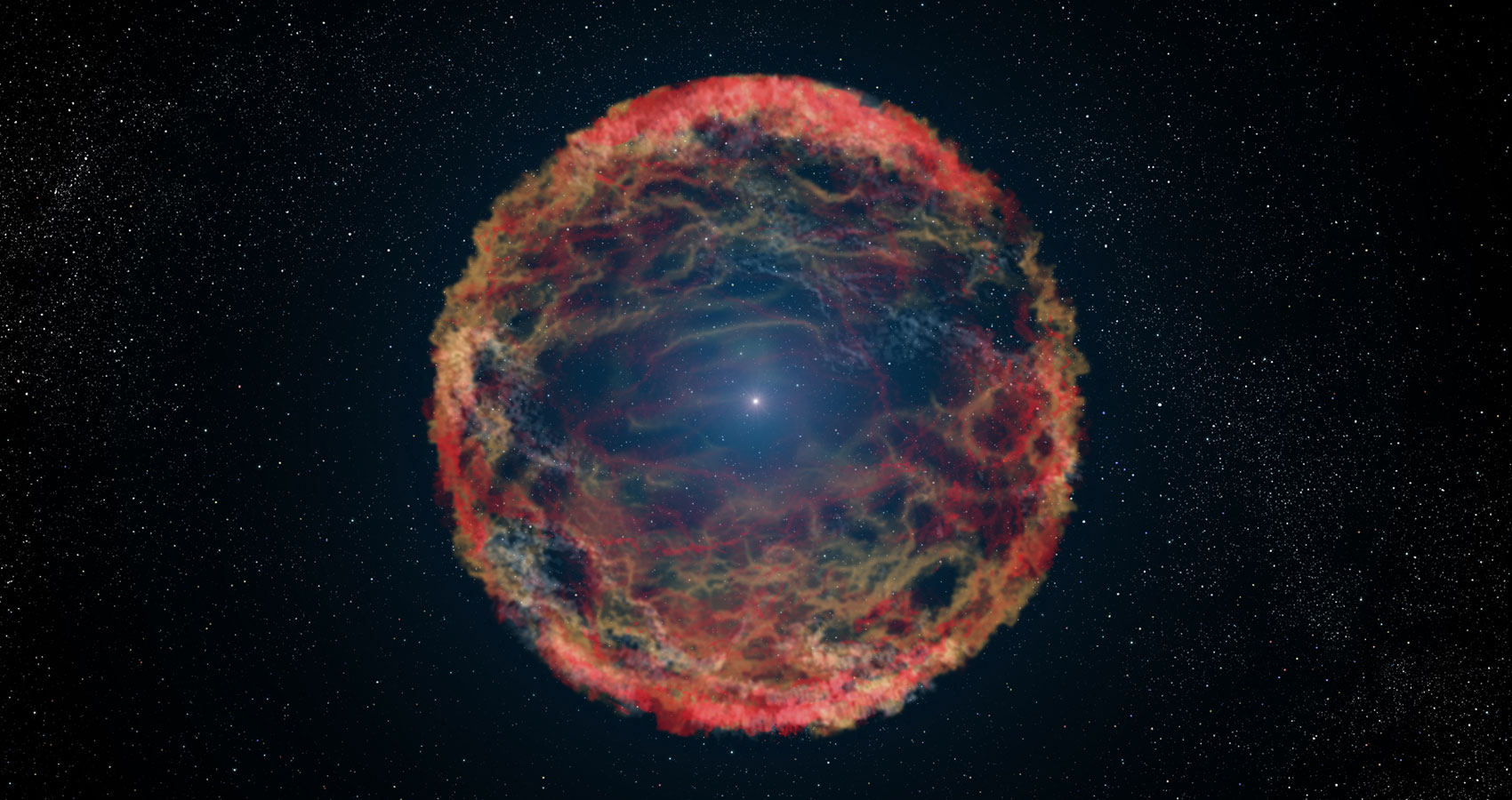There are actually two Boltzmann constants, the Boltzmann constant and the Stefan-Boltzmann constant; both play key roles in astrophysics … the first bridges the macroscopic and microscopic worlds, and provides the basis for the zero-th law of thermodynamics; the second is in the equation for blackbody radiation.
The zero-th law of thermodynamics is, in essence, what allows us to define temperature; if you could ‘look inside’ an isolated system (in equilibrium), the proportion of constituents making up the system with energy E is a function of E, and the Boltzmann constant (k or kB). Specifically, the probability is proportional to:
e-E/kT
where T is the temperature. In SI units, k is 1.38 x 10-23 J/K (that’s joules per Kelvin). How Boltzmann’s constant links the macroscopic and microscopic worlds may perhaps be easiest seen like this: k is the gas constant R (remember the ideal gas law, pV = nRT) divided by Avogadro’s number.
Among the many places k appears in physics is in the Maxwell-Boltzmann distribution, which describes the distribution of speeds of molecules in a gas … and thus why the Earth’s (and Venus’) atmosphere has lost all its hydrogen (and only keeps its helium because what is lost gets replaced by helium from radioactive decay, in rocks), and why the gas giants (and stars) can keep theirs.
The Stefan-Boltzmann constant (?), ties the amount of energy radiated by a black body (per unit of area of its surface) to the blackbody temperature (this is the Stefan-Boltzmann law). ? is made up of other constants: pi, a couple of integers, the speed of light, Planck’s constant, … and the Boltzmann constant! As astronomers rely almost entirely on detection of photons (electromagnetic radiation) to observe the universe, it will surely come as no surprise to learn that astrophysics students become very familiar with the Stefan-Boltzmann law, very early in their studies! After all, absolute luminosity (energy radiated per unit of time) is one of the key things astronomers try to estimate.
Why does the Boltzmann constant pop up so often? Because the large-scale behavior of systems follows from what’s happening to the individual components of those systems, and the study of how to get from the small to the big (in classical physics) is statistical mechanics … which Boltzmann did most of the original heavy lifting in (along with Maxwell, Planck, and others); indeed, it was Planck who gave k its name, after Boltzmann’s death (and Planck who had Boltzmann’s entropy equation – with k – engraved on his tombstone).
Want to learn more? Here are some resources, at different levels: Ideal Gas Law (from Hyperphysics), Radiation Laws (from an introductory astronomy course), and University of Texas (Austin)’s Richard Fitzpatrick’s course (intended for upper level undergrad students) Thermodynamics & Statistical Mechanics.
Sources:
Hyperphysics
Wikipedia



